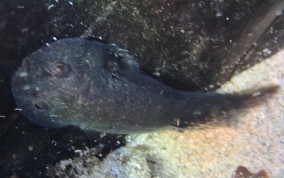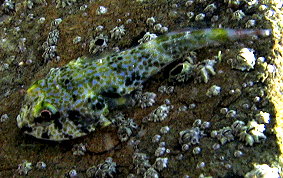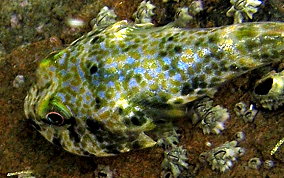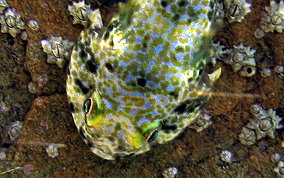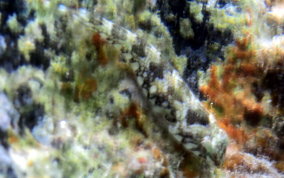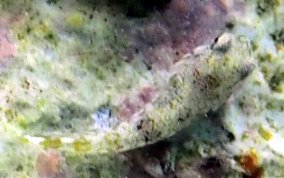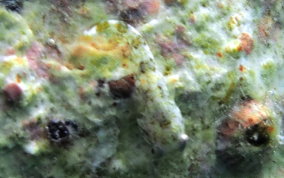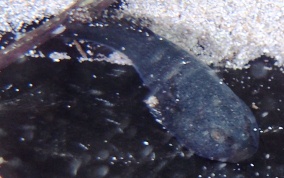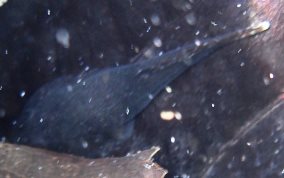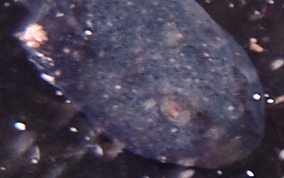Clingfish
Clingfish eat limpets, small crustaceans, Chitons, fishes and worms such as the Christmas Tree and other tube worms and bristleworms. (Fire worms). They can pale or darken to match the surface they're on. Look for them in the cracks and crevices along the rocky shorelines in areas of surge or in litter in shallow water. They can grow to about 3 inches long. A recent discovery is that some species of this small fish are venomous.(external link to scientific report)
Padded Clingfish- Acyrtus nudus1. This clingfish was found on the top side of some rocks in very shallow water that was exposed to the surf. (Notice the acorn barnacles). Their pectoral spines are clearly visible.
2. The Long or Chevron Clingfish (scientific name unknown) was also found along the rocky shoreline at Francis Bay. they were on the rocks at the surface area of the water, sometime in and sometimes out of the water. Barely 2 inches long.
3. This Black Clingfish may be a Padded Clingfish. It has the same sort of pectoral spine (see 3rd picture), has the white tipped tail and same head shape. Since they are known to be able to change their display coloring to match surroundings it's possible. But it is also possible that it is a different species entirely such as Gobiesox punctulatus
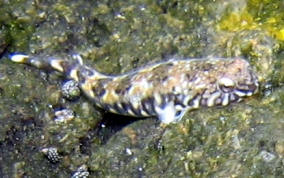
Long or Chevron Clingfish
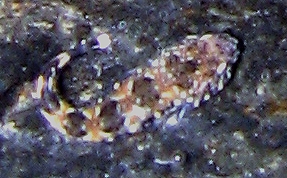
Long or Chevron Clingfish
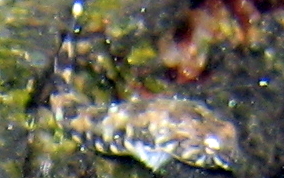
Long or Chevron Clingfish
